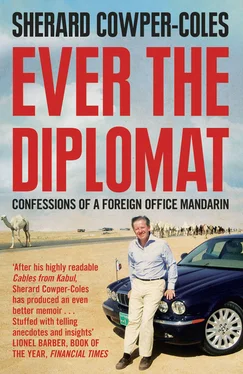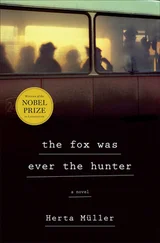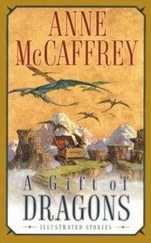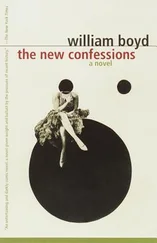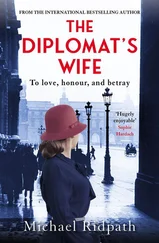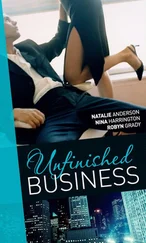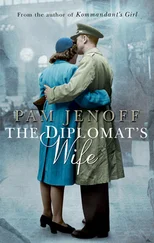In August 1977, the Secretary of State was Dr David Owen, at thirty-seven the youngest Foreign Secretary since Eden. He had been promoted by the Prime Minister, Jim Callaghan, in April that year, when Tony Crosland had died, in the Radcliffe Infirmary in Oxford, of a heart attack after going to fetch the Sunday papers. I woke up one morning in Oxford to hear the terrible news, and regretted that I wouldn’t be working for Crosland, if and when I joined the Foreign Office that autumn.
Owen was a man in a hurry, determined to make a difference, above all on the problem of Rhodesia. There the insurgency against Ian Smith’s illegal minority regime was gathering pace. Owen spent much time on shuttle diplomacy with President Carter’s envoy, the former Mayor of Atlanta, Andy Young. In the rush for results, Owen lost patience with Foreign Office procedures. He preferred to operate through the SIS network, sending messages on their channels, rather than using the Foreign Office’s rather more stately telegraph system. Owen’s apparent disdain for conventional diplomacy showed me how important it was to work in ways which satisfied the demands of politics.
Rumours filtered down of tensions between the Secretary of State and officials at the top of the Office. In one of his regular private messages to ambassadors abroad, the Permanent Under Secretary described the Foreign Secretary as tired and under strain, as a result of trying to do, and travel, too much.
All that only added to the sense of awe when I was asked occasionally to walk urgent papers down to the Foreign Secretary’s office, or to retrieve them from there. The Private Office (as it was known) consisted of the Foreign Secretary’s own magnificent office, with its views across Horse Guards and St James’s Park, and, separated from the Secretary of State and from the corridor by great oak doors, the private secretaries’ room. The walls of the latter were covered with small portraits, latterly photographs, of every previous holder of the office, including Tony Crosland and Jim Callaghan. Around the side of the room sat the four private secretaries at their great desks: in the far corner, with a bust of Pitt the Younger behind him, the Principal Private Secretary. The other occupants of the room were two bright mid-career diplomats as assistant private secretaries, and a diary secretary. The Principal Private Secretary seemed impossibly grand: I never dreamed that one day I would do his job.
‘Walking a paper down’ meant entering the private secretaries’ room, and approaching the desk of the private secretary in question, always aware that at any time the great oak door might swing open and the Foreign Secretary himself emerge. The first time I went down, pretty terrified, I was pleasantly surprised that, in the middle of the maelstrom, the Assistant Private Secretary who dealt with Ireland, Kieran Prendergast, had time to ask me who I was and what I did. It turned out that he had known my Dutch journalist cousin during his last posting, in The Hague.
But the Foreign Secretary isn’t the only minister in the Foreign Office. Usually, he is the department’s sole representative in the Cabinet, but there are at least four other ministers, including a peer to cover Foreign Office business in the House of Lords. For Ireland, in 1977, our junior Minister was Frank Judd. Personable, able to take a brief and speak to it, Judd was all that officials wanted in a junior minister. He did the political and representational jobs the Foreign Secretary couldn’t do, but without interfering unnecessarily in policy.
Ministers apart, the most intimidating aspect of starting in the Diplomatic Service is getting to know your way around a building that once housed four separate ministries: the Foreign, India, Colonial and Home Offices. Palmerston had asked for the present Italianate design, in place of Gilbert Scott’s Gothic vision, which instead became St Pancras Station. In 1977, the hugely imaginative and expensive restoration programme for the Old Public Offices had not yet started. They were still in a state of post-war squalor. The glories of the Locarno rooms were concealed behind plywood partitions, erected to create more office space in wartime. The beautiful marble floor of the Durbar Court of the India Office was covered with Nissen huts, housing communications equipment, even though the Court was roofed over (rather leakily). Only ten years earlier, the building had still been heated by the coal fires which adorned most offices. The ashes of that era still seemed to cover everything in a fine film of dust. The Republic of Ireland Department was hidden away in the roof spaces of what had once been the Colonial Office. Only yards away was the old Colonial Office Library which still houses the stuffed anaconda, known fondly as Albert, brought back from distant parts who knows when or why. As gradually I found my way round the great building, I came to know and love the place where I was to spend much of the next three decades. I was immensely proud of its wonders, and its stories. Even then I used to invite friends in to show them the marvels of the India Office or of Sigismund Goetze’s kitsch post-Great War murals – apparently detested by Lord Curzon when he was foreign secretary – which adorn the great landing at the top of the main staircase. Then, as now, I marvelled at the allegory of Britannia Pacificatrix, surrounded by her victorious allies at the end of the First World War: France in her revolutionary bonnet, Belgium and Serbia depicted as naked maidens, Africa represented by a small black boy with a bowl of fruit on his head. Or the hooded figure invoking ‘Silence!’ above the door into the Foreign Secretary’s office. Best of all is Britannia Nutrix, breast-feeding her young colonies, just beside the Ambassadors’ Waiting Room where the Foreign Secretary’s visitors sit before they are summoned in. One of the best things the Foreign Office ever did was to institute guided tours of this magnificent labyrinth, at the heart of our imperial history.
From my first day in the Foreign Office, I knew that I was going to love the job. I was thrilled when, after six months, Philip Mallet told me that he quite liked my work, even though there was plenty of room for improvement. I had already noticed that he used bits of some of my drafts.
The weeks passed into months, and our group of new entrants began to wonder what next. We knew that the usual pattern was a year learning on the job in London, before language training and a first posting overseas. We called ourselves – and still do – the G77, borrowing the name of the UN developing countries’ caucus. We met regularly for drinks and dinner, usually at Mon Plaisir in Monmouth Street, and compared notes. One of us had been sent straight abroad, as the annual reinforcement for the British mission to the UN in New York for the General Assembly session. We asked him what life was like overseas; the answer came back that it was even better than in London. Living abroad, working with foreigners, was just as rewarding as advertised: it was what we had joined the Diplomatic Service for. And the free accommodation, and allowances, would help pay off our debts.
When sitting the Qualifying Tests at Oxford, and again soon after joining the Diplomatic Service, we had been obliged to take a language-aptitude test. The test involved learning Kurdish in an afternoon. It examined every aspect of aptitude (or otherwise) for learning foreign languages: aural as well as oral ability, written expression, grasp of grammar and so on. Foolishly, I had a glass of wine at a picnic in the park with my aunt just before the second test, on the grounds that it would improve my fluency. I was quite wrong, but my average mark over both tests was just good enough to suggest that I might be capable of learning what the FCO Training Department called Class I languages: essentially, Arabic, Chinese or Japanese. It didn’t take me long to choose. My poor ear for pitch meant that I could not hope, so I thought, to master a tonal language such as Chinese or Japanese. But what tipped the balance was that I knew very little about the Far East, and a bit more about the Middle East, based mainly on my study of ancient history. I opted for Arabic, and was told that I would start at the Foreign Office’s famous Middle East Centre for Arab Studies, or MECAS, in the village of Shemlan, above Beirut, in September 1978.
Читать дальше
